Subliminal Sexual Advertisements of the 1970s
Open your eyes, if you think sex it means you buy sex. Subliminal sexual advertisements convince you to open your wallets.
The famous motto "sex sells" isn’t a new concept. In fact, it may be older than you think. Companies were using risqué and erotic images in advertisements as far back as 1871, with Pearl Tobacco featuring a nude woman on their cigarette packages. Based on the vast number of advertisements throughout history that use nudity, erotic images, innuendos, and other sexual content as a selling device, it would seem that the saying rings true.
Advertisers in the 1970s were especially fond of sexualizing their brands and frequently used sex as a vehicle to sell products. During the 1960s, the prevalence of oral contraceptives, the Civil Rights movement and the Vietnam War brought about a more liberal way of thinking in regards to sexuality, government, education, and other social areas. The decade drew attention to issues like racism and equality that carried over into the 1970s. However, the 1970s were also full of skepticism and doubt after the turmoil of war and economic decline.
At the start of the 70s, many were trying to get back on track after one of the worst recessions since the Great Depression. The advertising industry was hit too, but picked up pace in the later half of the decade as new technologies equipped advertisers with more customer information and improved business processes. Also, now that the color TV set was a common fixture in many homes, advertisers began to focus on and produce more commercials. According to the American Association of Advertising Agencies, during the time, advertisers made close to $28 billion with consumers being exposed to nearly 1,600 ads a day.
Subliminal messaging
Subliminal messaging was one of the most popular advertising mechanisms in the 1960s and 1970s. Unlike the in-your-face, obvious method of selling products that is more commonly found in the 1980s and later years, the adverts from the early 1970s played to the subconscious of viewers. Ads would hide images in walls, folds in clothing, ice cubes, and other unsuspected places.
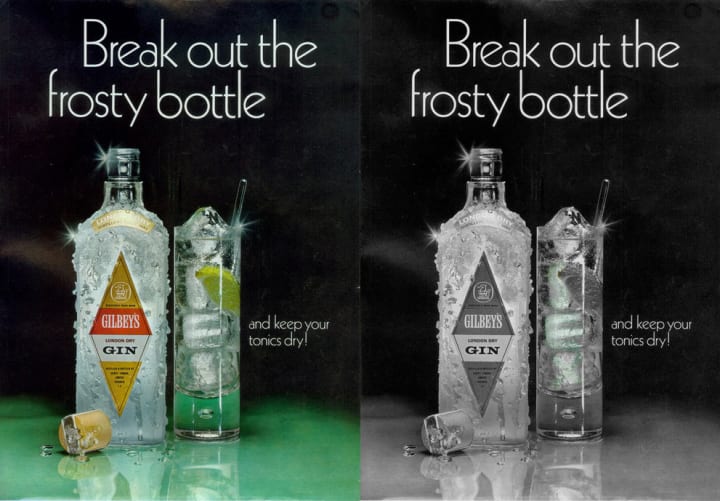
Sex was a common theme in these types of ads as well, with Gilbey's London Dry Gin advertisement perhaps being the most direct. The ad was published in a 1971 edition of Time magazine, and at first glance, it seems to simply be a picture of the Gin bottle and a drink. However, a closer look reveals the hidden message━the word "sex" spelled out through the strategic positioning of the ice cubes.
The increased use of subliminal messaging to sell products combined with growing skepticism by consumers led the Federal Trade Commission (FTC) and the National Advertising Review Board to lay down restrictions and standards for advertisers. The restrictions called out subliminal advertising and pressured companies to practice honesty and disclosure in their ads and marketing.
Amongst skepticism, advertisers reverted back to hard-sell tactics, using sex as a primary method to sell products. This advertising climate and a number of trends during the time, changed ad messages slightly, but a large chunk still featured sexual content, primarily with female images.
Although male models have been used in sexual advertisements, the majority of ads throughout history and especially in the 1970s used females as their vehicle to portray sexuality. In a University of Georgia research study, advertisements from 1983 to 2003 were analyzed for sexual content. The study found that in 1983 only 3 percent of ads sexualized men, opposed to 11 percent with women. Twenty years later, in 2003, advertisements reflected a similar ratio, with only 6 percent sexualizing men and 22 percent women.
One of the most sexual advertisements to come out of the 1970s was the 1975 Love’s Baby Soft campaign. The print ads featured women in sexual outfits and poses with the slogan, "Because innocence is sexier than you think."
The campaign also had TV ads, which had even more creepy, sexual undertones than their print counterparts. The ads started out with a woman wearing a cleavage friendly dress and suggestively licking a huge lollipop while a voiceover says, "There’s one person nobody can resist, and that’s a baby." It also claimed the product line had the scent, "of a cuddly, clean baby that grew up to be very sexy." The campaign tried to link the concept of naive, child-like innocence with sexiness in order to sell its feminine beauty products.
On the other side of the spectrum, the emergence of feminism and advocating of women's rights began to spark new portrayals in the media. During the 1970s, more ads started to feature women as young professionals in the workplace. However, that also caused a new stereotype to take shape━the superwoman. Some advertisements, like L’Oreal’s famous campaign with the slogan, “Because I’m worth it,” achieved massive success by embracing the independence and liberation side of the movement.
Other advertisements still managed to sneak in sexual innuendos while claiming to support the new female empowerment at the time. The most notable is the TV ad campaign by the perfume brand Enjoli. The commercial seems to support moving away from the sexual objects that women are often portrayed as in commercials. It shows a woman in professional wear and briefcase, but then adds a housewife and sexy version to the mix. Then, the woman sings the jingle exclaiming that she can "bring home the bacon, fry it up in a pan, and never let you forget you're a man." The meaning of the last phrase, "never let you forget you’re a man" leaves the interpretation up to viewers. However, the imagery in the commercial implies a very sexual connotation. The advertisement was one of several during the time that perpetuated the idea that women can be professionals, as long as they are still sexy and attractive while doing it.
When implications of sex didn’t seem sufficient enough to sell products, advertisers used more direct representations of it in ads, with male and female models in intimate embraces paired with sexual taglines. One 1970s commercial by Kingfisher Vinyl company featured a man holding flooring while a woman sat naked in a bathtub. Another advertisement from Tipalet cigarettes made in 1969, but found in 1970 publications, used the tagline, "Blow in her face and she’ll follow her anywhere." The words were accompanied by a male blowing smoke into the face of a woman showing cleavage and staring longingly into his face.
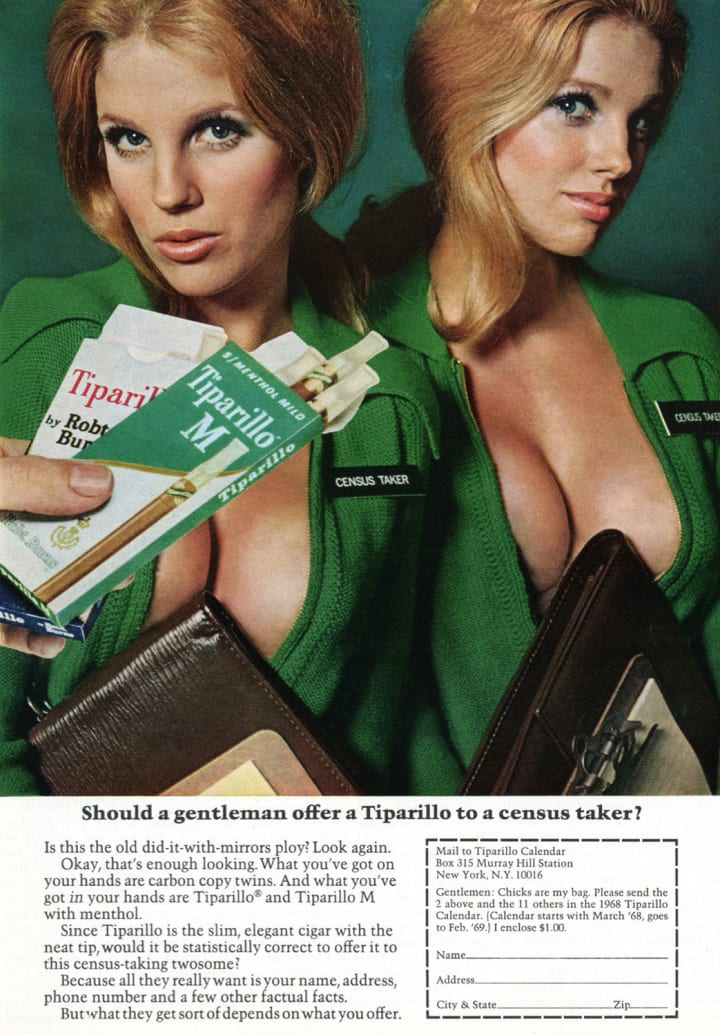
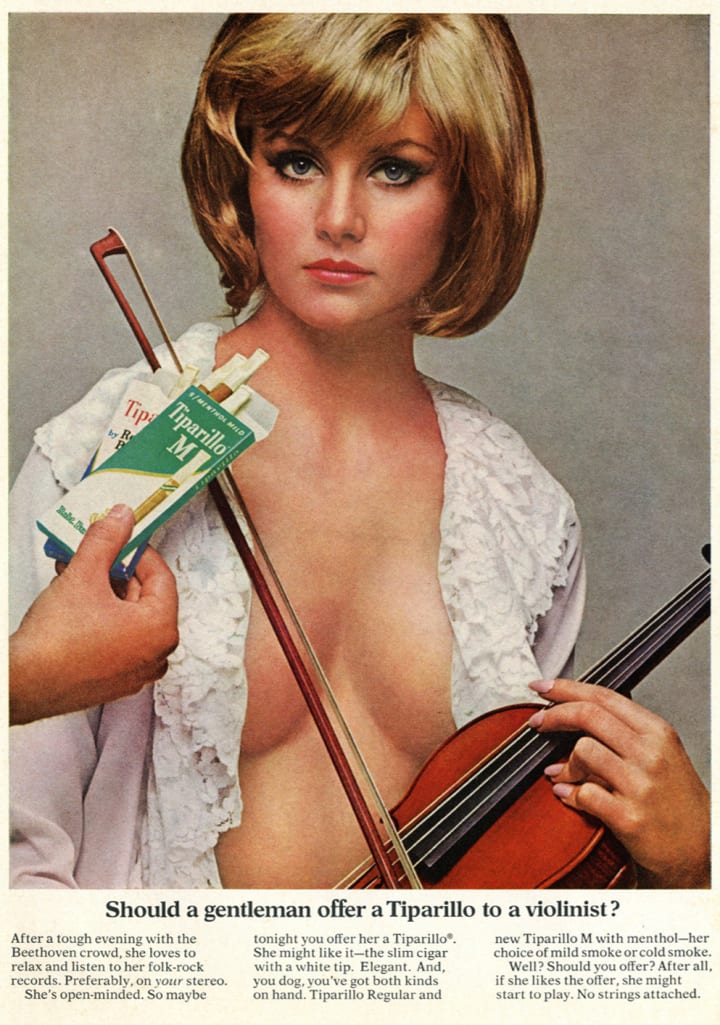
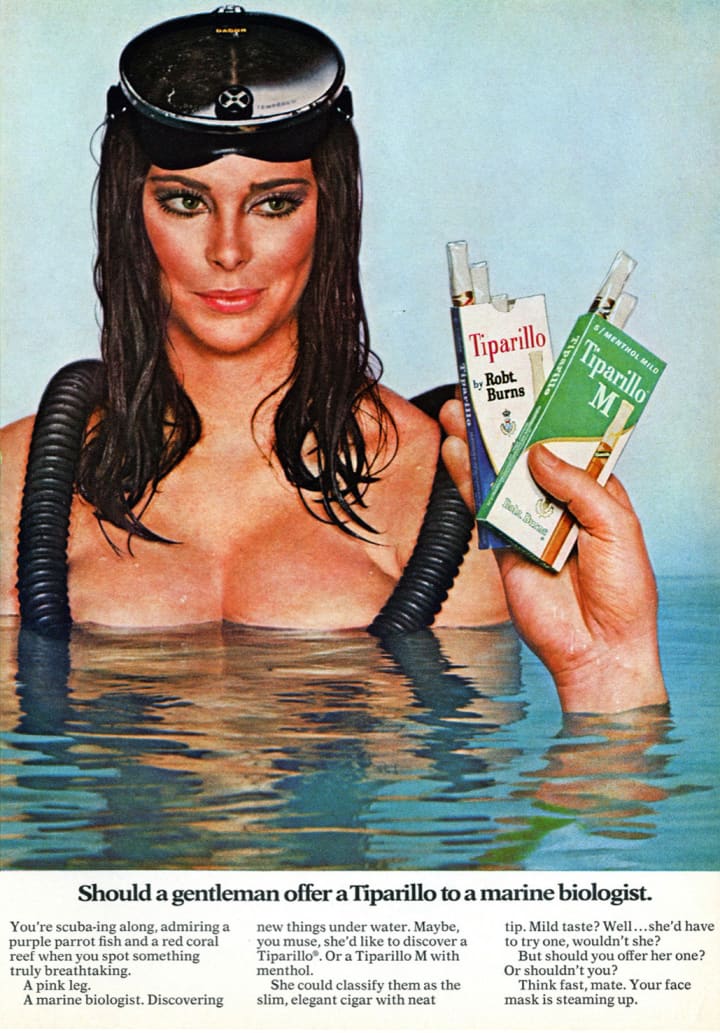
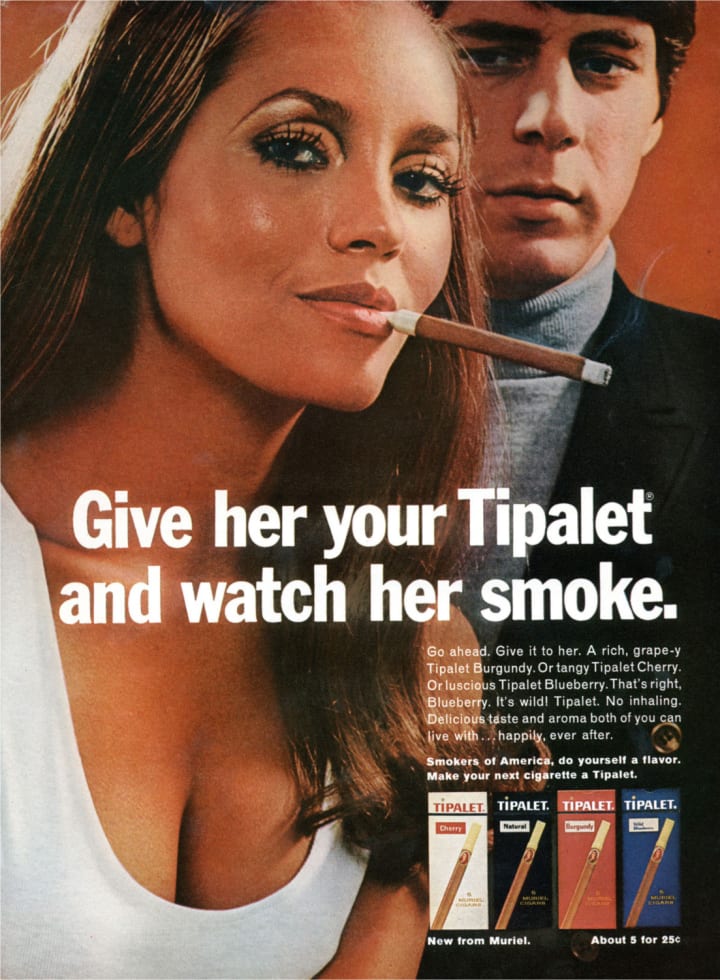
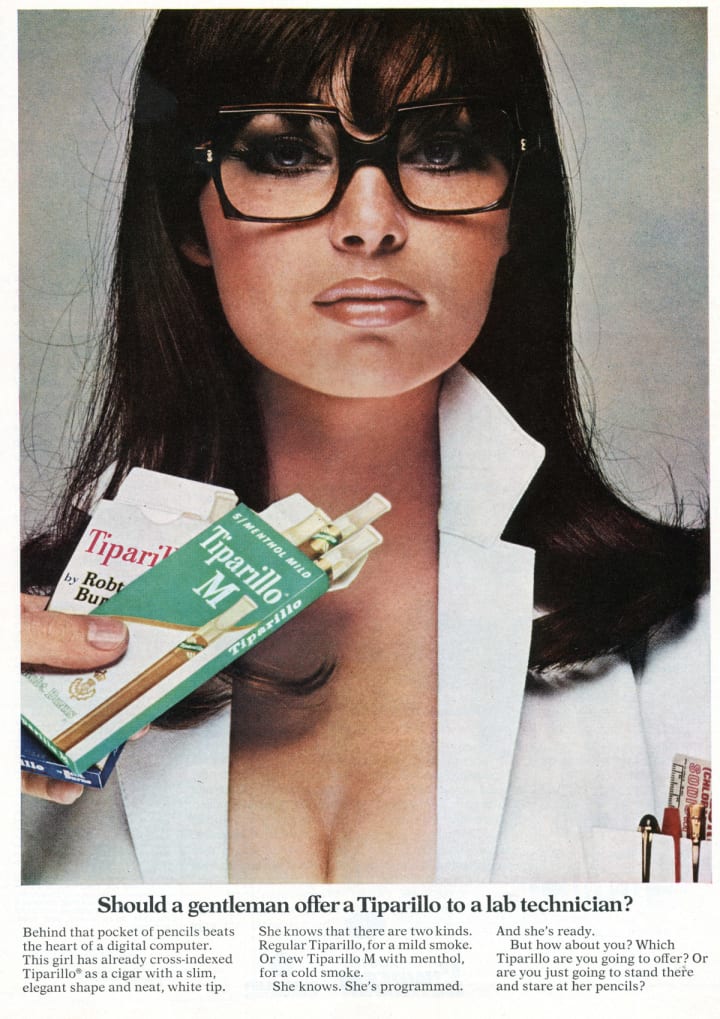
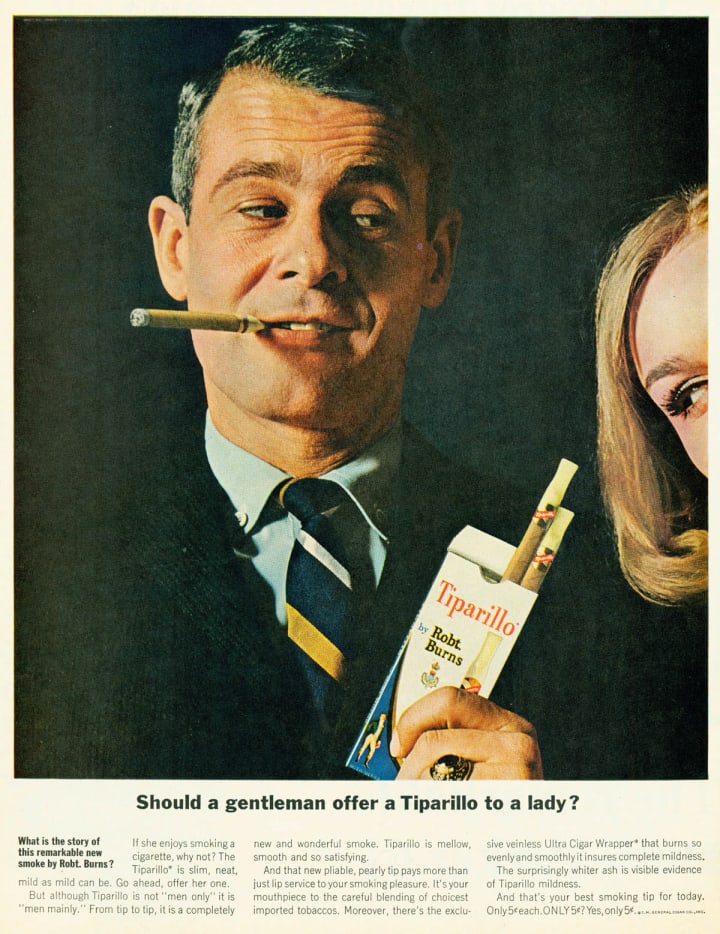
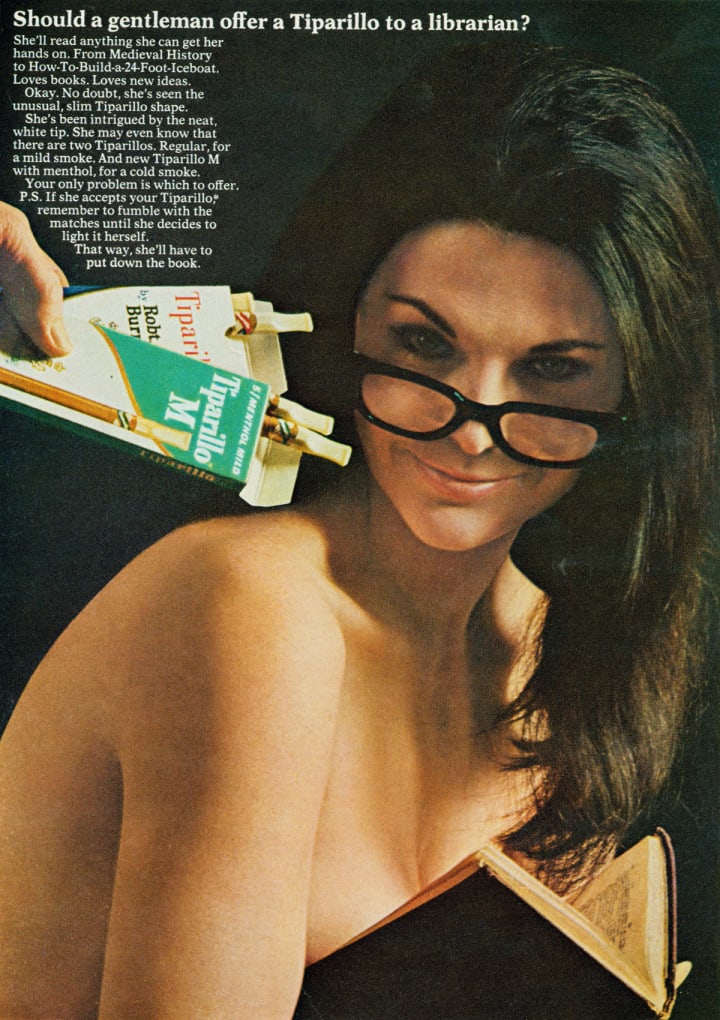
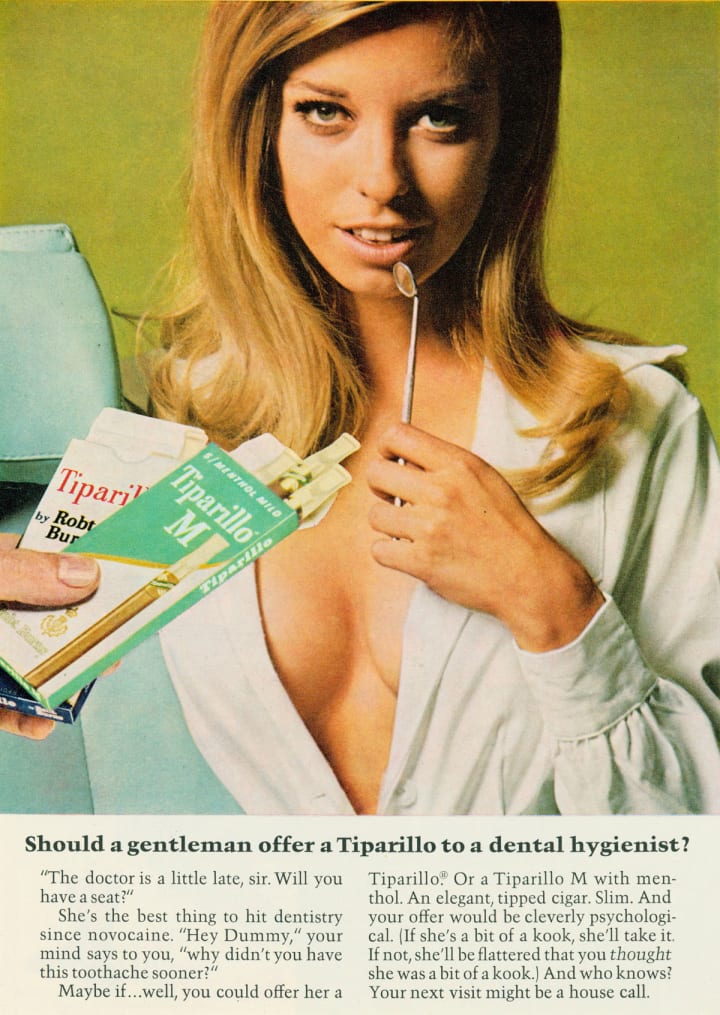
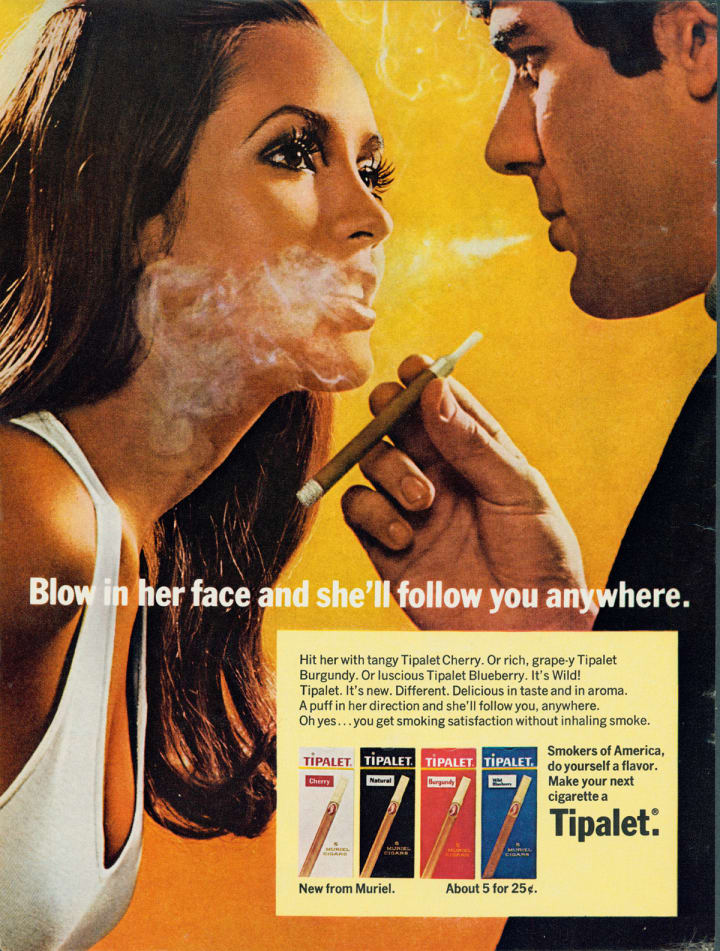
Advocacy and Awareness
As advertisements began to use more female stereotypes, some feminists began to draw attention to the sexualized ads of the era. Notably, feminist Gloria Steinem reviewed Ms. magazine in the early 1970s and highlighted ads that portrayed women in sexual, offensive and sexist ways. The ads were featured in a section titled “No Comment” and drew attention to the stereotypical portrayals of women in media.
However, despite advocacy and awareness efforts many advertisements of today are still sexualized. Many brands, entertainers and companies still believe the saying, "sex sells" and use it as a method to draw attention and attract customers. However, how sex is portrayed and the types of products that use it as a selling mechanism has changed.
According to a study by researchers at the University of Georgia, sex is still a common element in ads and other media. The lead study researcher and head of the department of advertising and public relations in the UGA Grady College of Journalism and Mass Communication, Tom Reichert, claimed that sex can be an effective way to sell. In an interview reported by Business Daily, Reichert says,
“Sex sells because it attracts attention. People are hard-wired to notice sexually relevant information, so ads with sexual content get noticed."
Sex may sell, but the statistics also show that it is only effective in selling certain products. People are now more aware of the presence of sex in media but still seem respond to it, when it comes to certain industries. Advertisers have changed the types of product niches in which they use sex as a selling tool. According to the study findings, the use of sex in advertisements today is more common amongst impulse purchases. This includes items like alcohol, beauty products, cosmetics, clothing or entertainment.
The conclusions from the study follow the same belief as other reports that claim that sex doesn’t sell when used to advertise products that are inherently unsexy. This means that when it comes to financial services, banking, appliance purchases and other high-risk investments, sex is not an effective selling point.
Sex in advertisements of the 1970s came in the form of nudity, erotic images, subliminal messages, implications and innuendos. Today, it is present in every type of media, and historically, it has always existed. Media expert, author, researcher and Arizona State University professor, Mary-Lou Galician eloquently summarized the long-running presence of sex in media stating that "Sexual content in mass media has been around as long as mass media itself.’’
About the Creator
Frank White
New Yorker in his forties. His counsel is sought by many, offered to few. Traveled the world in search of answers, but found more questions.






Comments
There are no comments for this story
Be the first to respond and start the conversation.